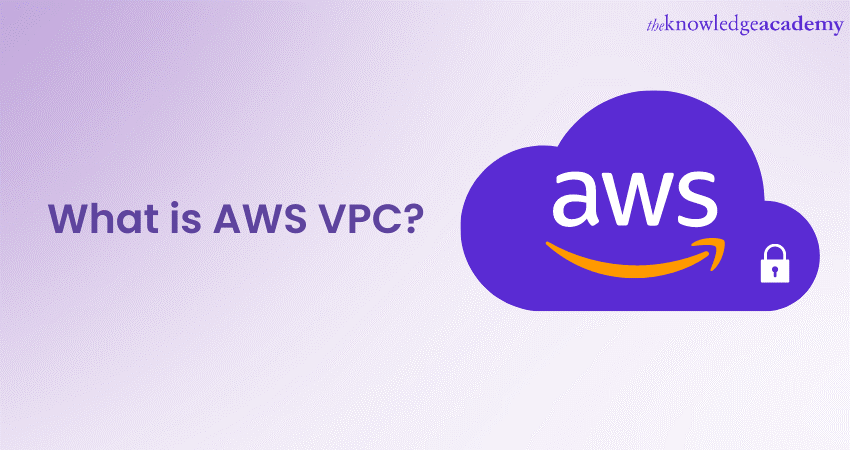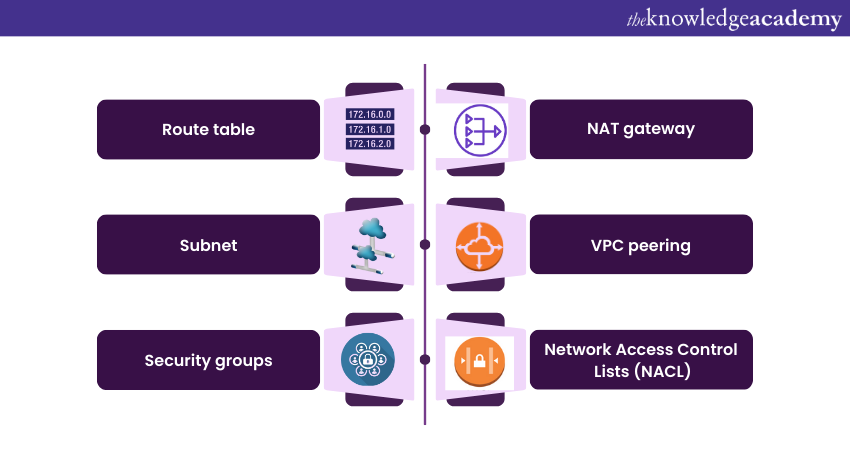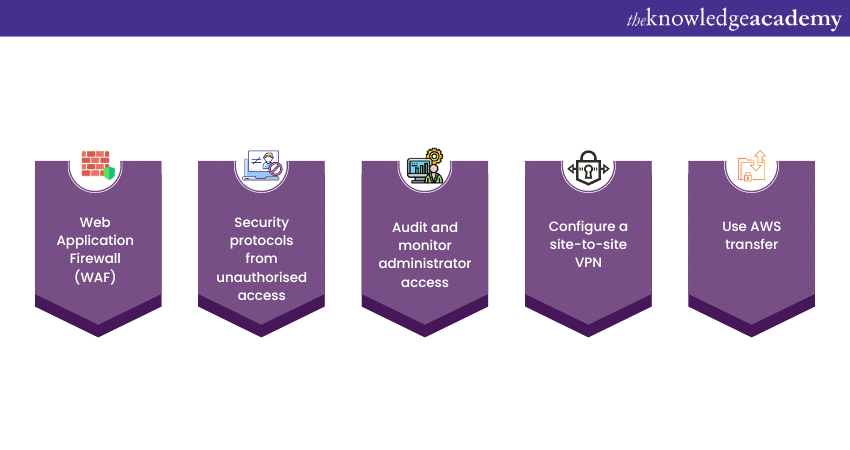We may not have the course you’re looking for. If you enquire or give us a call on 01344203999 and speak to our training experts, we may still be able to help with your training requirements.
Training Outcomes Within Your Budget!
We ensure quality, budget-alignment, and timely delivery by our expert instructors.

Cloud infrastructures play a pivotal role in driving business operations and innovation. As organisations migrate to the cloud with platforms such as AWS, one recurring question often emerges: ‘What is AWS VPC?’ AWS VPC, or Amazon Web Services Virtual Private Cloud, provides a secure and customisable environment within the AWS ecosystem.
According to a 2023 Statista report, AWS generated revenues over 75 billion GBP. It offers businesses a dedicated space to deploy resources, ensuring scalability, flexibility, and top-notch security. In this blog, you will find the answer to “What is AWS VPC?” and the intricacies associated with it. You’ll also get a glimpse of the benefits and best practices.
Table of Contents
1) Understanding What is AWS VPC
2) Exploring the types of AWS VPCs in AWS Cloud
3) Looking at the components of AWS VPC
4) Benefits of using AWS VPC
5) Best practices for a secure AWS VPC implementation
6) Conclusion
Understanding What is AWS VPC
The AWS Virtual Private Cloud or VPC is a cloud service that allows users to create a dedicated and isolated virtual network within the vast AWS environment. It can be compared to carving out your own private section in the massive AWS cloud, or like setting up a private LAN in an on-premises data centre.
Within a VPC, users can define their own customisable IP address range, create subnets, and set up routing and security controls. This ensures that you have full oversight over the virtual networking environment, including selection of IP address ranges, creation of the subnets, and configuration of route tables and network gateways.
Furthermore, one of the standout features of AWS VPC is the ability to bridge your on-premises infrastructure with the AWS cloud, offering a hybrid environment. It can seamlessly integrate with direct connections or VPNs, allowing resources in the VPC to communicate with external servers as if they're on the same private network.
Exploring the types of AWS VPCs in AWS cloud
AWS cloud is Amazon's comprehensive Coud Computing platform, offering businesses a broad range of services from data storage to Machine Learning. It provides scalable, reliable, and cost-effective solutions that power countless businesses and applications around the world, aiding in digital transformation and innovation.
AWS VPC allows users to provision logically isolated sections of the AWS cloud. Within these sections, one can launch resources in a virtual network that they define. However, to make the onboarding process smoother for newcomers while also offering flexibility to more advanced users, AWS offers two types of VPCs: Default and Non-default VPCs.
Default VPC
When you open an AWS account and start using VPC for the first time, AWS sets up a Default VPC for you. This enables you to deploy instances immediately without delving deep into networking configurations. Characteristics of a default VPC are:
a) Every default VPC comes with a size /16 IPv4 CIDR block, providing over 65,000 private IPv4 addresses.
b) In every region, AWS provides a default VPC so you can instantly deploy instances.
c) A default VPC includes an internet gateway, allowing instances to directly communicate with the internet.
d) Each default VPC is equipped with a default subnet in each Availability Zone to ensure high availability.
e) Lastly, the default VPC allows all resources to communicate with each other, both within and outside the VPC.
Non-default VPC
For users who require more control over their networking environment, AWS provides the ability to create Non-default VPCs. Here, users can:
a) Define their own IP address range.
b) Create custom subnets, set up route tables, and configure network gateways.
c) Opt for enhanced security settings, isolation, or a more intricate network design to suit particular application needs.
Understand and manage a Virtual Private Cloud, by signing up for the Amazon Virtual Private Cloud (VPC) Training now!
Components of AWS VPC
The AWS VPC offers a sophisticated suite of features and components to help users create a tailored and secure cloud environment. Let's explore these components further in detail as follows:

1) Route table: A route table contains rules that determine where network traffic is directed within a VPC. Every subnet in a VPC must be associated with a route table, which directs the traffic out of the subnet based on the IP protocol route.
2) Subnet: In the context of AWS VPC, a subnet refers to the range of IP addresses in the VPC. Users can divide a VPC’s IP address range into multiple subnets, allowing resources to be segmented based on operational needs. Subnets can either be public (can communicate directly with the internet) or private (cannot directly communicate with the internet).
3) Security groups: These act as virtual firewalls for EC2 instances, helping regulate inbound and outbound traffic. Each security group comprises a set of rules which permit or deny traffic, based on factors like protocol, port, and source/destination IP or subnet.
4) NAT gateway: Network Address Translation (NAT) gateway allows instances in a private subnet to initiate outbound traffic to the internet, while preventing inbound traffic initiated by external sources. This ensures instances in a private subnet can fetch updates or download files without being directly accessible from the internet.
5) VPC peering: It is a networking connection between two VPCs, allowing them to share resources as though they're on the same network. This can be between VPCs in the same AWS account or different accounts, and even between different AWS regions.
6) Network Access Control Lists (NACL): NACLs are another layer of security for VPCs, providing a rule set for controlling inbound and outbound traffic at the subnet level. Unlike security groups, which are stateful, NACLs are stateless, meaning they evaluate each request independently without considering any prior requests.
7) Virtual Private gateway: This is the VPN concentrator on the Amazon side of a VPN connection. It lets AWS resources, like EC2 instances within a VPC, communicate with on-premises network resources in a secure manner.
8) Customer gateway: While the Virtual Private Gateway sits on the AWS side, the Customer Gateway is the physical device (like a router) in your on-premises data centre or network. It provides information to AWS about how to communicate with your network.
9) Elastic IP: An Elastic IP is a static, public IPv4 address that can be allocated to your AWS account. It’s designed for dynamic cloud computing and can be associated with any instance or a Network Interface in your VPC.
10) Network interface: Also known as an Elastic Network Interface (ENI), it's a virtual network card and a VPC component that includes a primary private IP address, one or more secondary IP addresses, a MAC address, and can be associated with security groups.
11) VPC endpoints: These enable private connections between your VPC and AWS services without using a public IP. Traffic between your VPC and the service does not leave the Amazon network, ensuring more secure and fast communication.
Learn about the latest IPv6 protocols, by signing up for the IPv6 Basics course now!
Benefits of using AWS VPC
AWS VPC provides users a private, customisable section within the AWS Cloud. Here are the important benefits of using AWS VPC:
1) Ability to change security group membership: One of the standout features of AWS VPC is the flexibility it offers in managing security groups. Users can dynamically modify security group membership of an instance, even when it's running. This means that as security requirements evolve or if unforeseen threats emerge, you can swiftly adjust your configurations to ensure the continued protection of your resources without service interruptions.
2) Assignment of multiple IPv4 to instances: AWS VPC permits the assignment of multiple IPv4 addresses to an instance. This is advantageous for hosting multiple websites on a single server, differentiating network traffic, or implementing fault-tolerant software architectures. It enhances flexibility and allows for more advanced networking setups within the cloud environment.
3) Layered network of resources: Through subnets and routing controls, AWS VPC lets users create a layered network structure. This hierarchy enables the efficient organization of resources, separation of internal from external-facing assets, and ensures a more structured and secure cloud environment.
4) Access Control List (ACL): With Network Access Control Lists in AWS VPC, users have granular control over which traffic can enter or exit subnets. This level of detail allows for enhanced security configurations, ensuring only legitimate traffic flows within the VPC.
5) Control of inbound and outbound traffic: Both security groups and NACLs in AWS VPC provide controls for managing inbound and outbound traffic. This dual layer of control ensures that resources within the VPC are shielded from unwanted external traffic, while also regulating the outbound traffic from the VPC to the wider internet.
Best practices for a secure AWS VPC implementation
Here are the various best practices for maintaining a secure AWS VPC implementation:

1) Web Application Firewall (WAF): Implementing AWS WAF is essential. It filters malicious traffic, ensuring that only legitimate requests reach your applications. By defining customizable security rules, WAF protects against common web exploits.
2) Security protocols from unauthorised access: Always employ the principle of least privilege. Grant the minimal necessary permissions to entities and ensure services are inaccessible to the public unless necessary. Regularly review and update security groups and NACLs.
3) Audit and monitor administrator access: Using AWS CloudTrail and AWS Config, continuously monitor and audit administrative actions. Any unauthorized or suspicious activity should trigger real-time alerts.
4) Configure a site-to-site VPN: For hybrid architectures connecting on-premises resources to the AWS Cloud, use a site-to-site VPN. It encrypts data in transit, ensuring secure communication between your data centre and the AWS VPC.
5) Use AWS transfer: For moving data into and out of AWS, utilize AWS Transfer for SFTP, FTPS, and FTP. It provides a fully managed, secure, and seamless data migration and integration service, ensuring data integrity and security.
Conclusion
Understanding What is AWS VPC is fundamental for businesses seeking a secure and customisable cloud environment. By leveraging AWS VPC's features and adhering to best practices, organisations can achieve enhanced security, scalability, and control over their cloud resources.
Get in-depth knowledge about computing, storage and more, by signing up for our AWS Certification Training Courses now!
Frequently Asked Questions
Upcoming Cloud Computing Resources Batches & Dates
Date
 AWS RoboMaker Training
AWS RoboMaker Training
Fri 26th Jul 2024
Fri 25th Oct 2024







 Top Rated Course
Top Rated Course



 If you wish to make any changes to your course, please
If you wish to make any changes to your course, please


